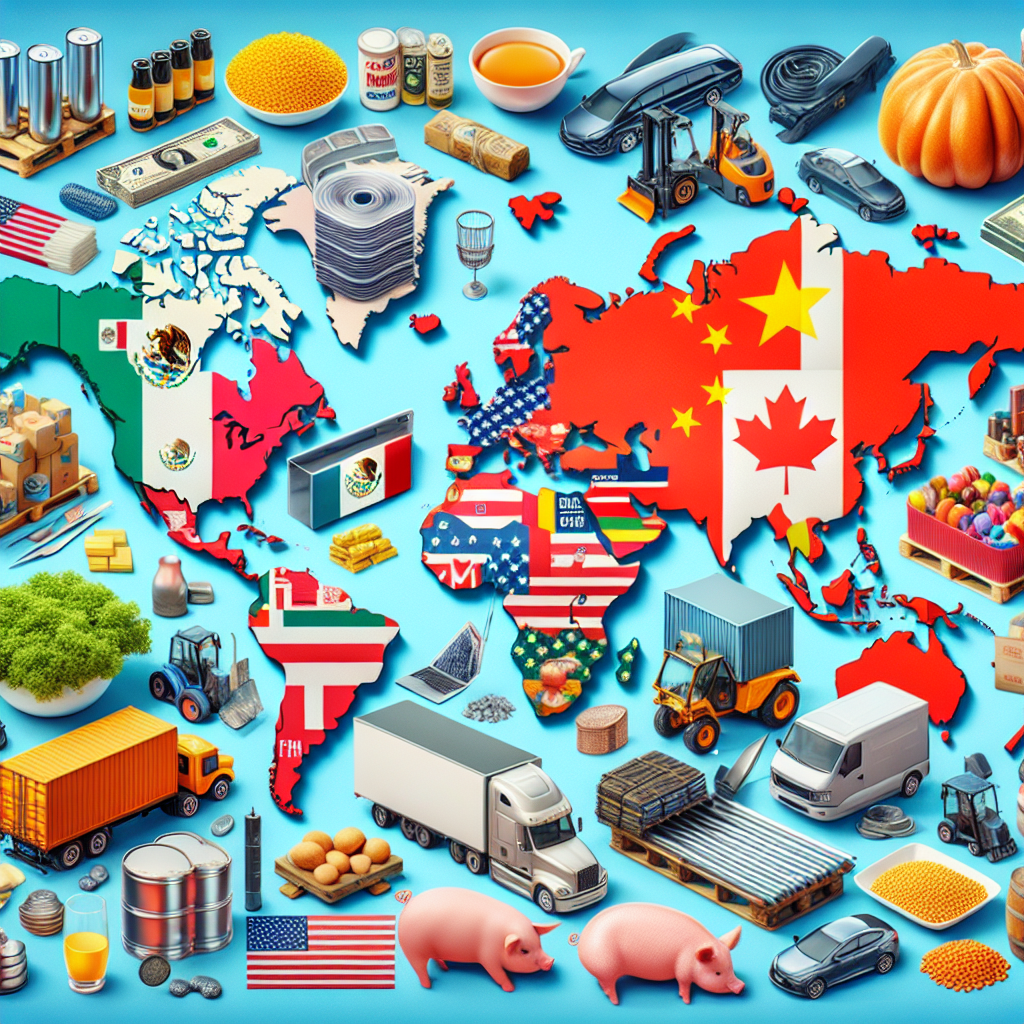Key Products Targeted by Trump’s Tariffs on Mexico, Canada, and China
Key Products Targeted by Trump’s Tariffs on Mexico, Canada, and China
Introduction
In a strategic move to address trade imbalances and protect domestic industries, the Trump administration imposed tariffs on a range of products from Mexico, Canada, and China. These tariffs aimed to pressure these countries into renegotiating trade agreements more favorable to the United States.
Targeted Products from Mexico
The tariffs on Mexican goods were primarily focused on the automotive and agricultural sectors, which are significant contributors to the Mexican economy.
- Automobiles: Tariffs were imposed on cars and auto parts, impacting the integrated supply chain between the U.S. and Mexico.
- Agricultural Products: Key agricultural exports such as avocados, tomatoes, and tequila faced increased tariffs, affecting both Mexican farmers and U.S. consumers.
Key Canadian Exports Affected
Canada, a close trading partner, saw tariffs on products that are crucial to its economy, particularly in the metals and dairy sectors.
- Steel and Aluminum: Tariffs on these metals were intended to bolster U.S. domestic production and address national security concerns.
- Dairy Products: The U.S. targeted Canadian dairy exports to open up the market for American dairy farmers.
Chinese Goods Under Tariff Pressure
The tariffs on Chinese imports were part of a broader strategy to counteract what the U.S. perceived as unfair trade practices and intellectual property theft.
- Electronics: High tariffs were placed on consumer electronics, including smartphones and laptops, to encourage domestic manufacturing.
- Machinery: Industrial machinery and equipment faced tariffs to protect U.S. manufacturing jobs.
- Textiles: Tariffs on clothing and textiles aimed to revive the U.S. textile industry.
Conclusion
The tariffs imposed by the Trump administration on Mexico, Canada, and China targeted key sectors to protect U.S. industries and address trade imbalances. While these measures aimed to strengthen the U.S. economy, they also led to increased tensions and retaliatory tariffs, impacting global trade dynamics. The long-term effects of these tariffs continue to influence international trade policies and economic relationships.








































